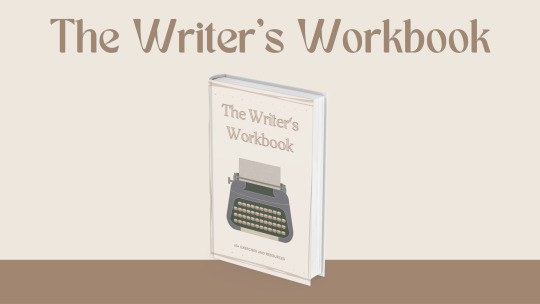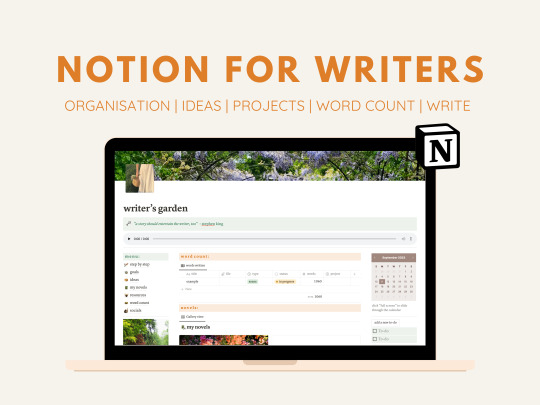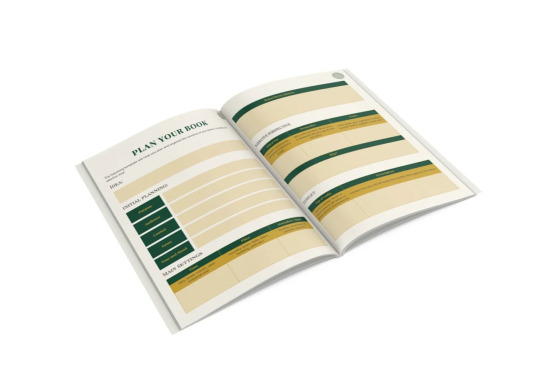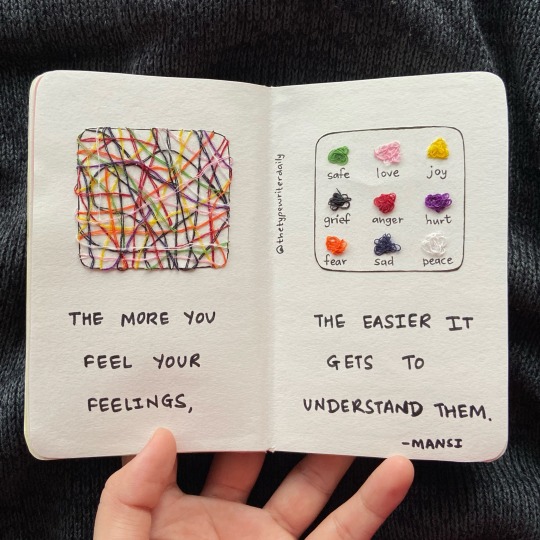#Writersofinstagram
Text
I hope this grief stays with me. Because it's all the unexpressed love that I didn't get to tell.
[k.b. // andrew garfield [losing his mother]
#grief quotes#poetry#writersofinstagram#writing#writersociety#poems#quotes#aesthetic#poemsbyme#poemsociety#love#andrew Garfield
27 notes
·
View notes
Text

Slyvia Plath
#poets corner#poet#poetry#vintage#nature#diary#life#poetic#love#dark academia#dark acadamia quotes#dark academic aesthetic#sylvia plath#unfeignedwriter#writersofinstagram#writers in tumblr
6K notes
·
View notes
Text
Being a writer is just 97% googling words to make sure they mean exactly what you always assumed they meant.
#writing#writersofinstagram#writblr#writers on tumblr#writing memes#writerscommunity#reading memes#writerscorner#reading#author#writerslife#authors#wrtblr#indieauthor#indie writer
49K notes
·
View notes
Text
free resources to write a novel in 2024
hello hello! it's me, rach!
as the new year approaches, many of us set goals and resolutions - myself included. one of my goals for 2024 is to write a novel (I've been procrastinating on this for quite a long time now). i assume that some of you might have the same goal, that's why I'm writing this post today.
over 2023 i've been releasing some freebies for authors just like me, so I thought I could compile my favorites in this post. hope you find this useful :)
1) the writer's workbook

this workbook has over 60 exercises to help you develop characters, scenarios, etc. if you're ever stuck, I'm pretty sure this workbook will be your best friend.
2) author's corner (notion template)

this is the most downloaded freebie in my shop! it is a notion dashboard with everything you need to organize your writing and has some templates included (like scrivener)!!
3) another notion template

this one has two themes you can choose from: cottage-core and dark academia. they're very similar to the previous template, but this one is more recent and I added some new features. feel free to explore both and pick the one you like the most.
4) the author's journal

this is a cute printable with 20 pages that will help you stay on track and manage your social media accounts as a writer who shares their work online. you can also register what you're currently writing and your personal research and resources.
5) plan your book printable

this is a 6-page printable for you to fill out and plan your book easily and effectively.
6) excel sheet to organize tasks & word-count

this is a simple excel sheet, but it is very effective for keeping track of your tasks & word-count of your novels. also, it is 100% customizable to your liking!
that's all for now! feel free to explore my gumroad shop where I have plenty of freebies to grab! also, don't forget to subscribe so that you never miss any opportunity to get a goodie for free :)
hope this post was useful!
have a nice day,
rach
#writing resources#writing#writeblr#writer tips#writing advice#writing help#writing tips#poetsandwriters#resources#research#wattpad#nanowrimo#creative writing#writerscommunity#writers#writing inspiration#writing prompts#writing reference#writerslife#writersofinstagram#software#inspiration#writing inspo#for writing#for writers#for whoever needs it#writing research#researching#we love an useful post#useful
3K notes
·
View notes
Text
Tips for Beginner Writers
1 - Make a chapter out line as you go, so if you need any sort of information about what's happened in the book, you don't have to scroll through each and every paragraph you wrote.
2 - Your first draft is not Your published book, you're gonna have to revise it and edit it a lot over the while, so Let it Suck. It'll turn into a second, third draft, and published book in the end.
3 - What matters is that you wrote, not how much you wrote. Try to set a daily number of words for you to write, that way you get consistency and it gives you a routine to follow.
4 - Remember that many books have been written, many with the same premise, but by different people. If you worry that your idea is too average or too oversaturated remember this:
5 - Don't make scenes too long, dont detail what you don't need to. If your character is going to develop via an event, detail it where needed, don't detail every little thing because it makes the scene unnecessarily long.
This Idea has been written before, but not by you.
#creative writing#writing#writing ideas#writers#writers on tumblr#writerscommunity#writeblr#writing community#writing tips#tips#tips and tricks#beginner writer tips#writersofig#write#female writers#writersofinstagram#writersociety#fic writing#how to#guide
917 notes
·
View notes
Text
How to make a villain's appearance memorable
Making a villain's appearance unique and memorable is important for creating a character that stands out in the audience's mind. Here are some ways to achieve this:
Clothing and accessories: The villain's clothing and accessories can be used to create a unique and memorable appearance. Consider using unusual fabrics, patterns, or shapes to create a distinctive look for the character. Pay attention to fashion style. What do they usually wear? Is their fashion sense good or bad? Casual or unique? They show it through the way they dress every time they appear. Accessories such as jewelry, hats, or gloves can also be used to add visual interest to the character.
Physical features: Physical features such as freckles, moles, scars, tattoos, or piercings are good ingredients for creating a unique look. Unusual facial features, such as a prominent nose or distinctive eye shape, can also be used to create memorable looks.
Makeup and hair: Like clothing, makeup and hair are often used to accentuate the villain. Hair textures, color, size, style, and shape serve as definitive social markers, determining, among other things, one's race or ethnicity, charm, beauty, religion, age, and so on. Meanwhile, makeup can show how much a character cares about his or her appearance. Bold or unusual makeup styles, such as dark or colorful eyeshadows, or distinctive hairstyles like mohawks or shaved heads are also distinctive and interesting highlights.
Symbolism: The villain's appearance can also be used to create symbolism that reflects their personality or motivations. Consider using symbols or motifs that are meaningful to the character, such as an animal or a particular design element.
Body language: Body language and gestures are symbols that tell the character's background and even the relationship between characters. A female villain will have different gestures than a male villain, and an assassin will definitely have fewer redundant movements than a doctor. You can use special gestures or movements that reflect your character's personality or motives.
Through the above characteristics, you can reflect the character's personality as well as some interests without saying it directly. Not only that, a memorable appearance also helps create strong impressions and makes it easy for the reader to create a visual image in their mind.
If you want to read more posts about writing, please click here and give me a follow!

#creative writing#writing#writeblr#writerscommunity#writer things#on writing#own character#writers#writersociety#writer problems#writerscorner#writblr#writers on tumblr#writerslife#amwriting#writersofinstagram#writing tips#writing community#write#villain
474 notes
·
View notes
Text
one bad grade doesn’t make you a lost cause. one act of prioritising yourself doesn’t make you selfish. one day of taking a break doesn’t make you lazy. one person breaking your heart doesn’t make you unlovable and avoiding one million places, people, situations and arguments that lower your self worth and esteem does not make you an escapist.
#desi tag#just desi things#desiblr#relatable content#writers and poets#writersofinstagram#writers on tumblr#desi tumblr#desi academia
152 notes
·
View notes
Text
Writing Scenes Out of Order
Gonna be honest with y'all, I have never ever written a story completely in order. I am actually incapable of doing that. Even though I write the most detailed outlines known to man before I even think about writing, I still can’t write the scenes in order. I swear by this because I sincerely believe that writing scenes out of order increases my productivity which I’ll talk about later. Even if you haven’t done this before, I recommend everyone try it at least once, so without further ado, here are a few reasons that you should write your stories out of order.
You Can Write The Ending First
When you write your scenes in order, generally that means that you’re going to write the ending last. In my experience, the ending is one of the most important things in your story, so I recommend that even if you write everything else in order, always write the ending first. Writing the ending first always gives you a light at the end of the tunnel. It gives you a destination to eventually reach. Even when you feel like your story is going absolutely nowhere, it allows you to go back and see what you want the ending to look like from the beginning which should help your motivation and hopefully lessen that pesky writer’s block!
Oh, Those Continuity Issues
Continuity issues are the absolute worst. I can never seem to remember the way that I described stuff at the end of the book when I’m writing everything back at the beginning. One thing that does get frustrating about writing scenes out of order, is keeping up with continuity like what season it is, what characters have already met, and even who is alive and dead at certain points. Writing scenes in order eliminates these issues because you are writing everything in the order that it happens. I would most definitely recommend keeping an outline or at least a sheet of notes when you’re writing scenes out of order, so that you can keep yourself organized and lessen the continuity issues that you have to go back and fix in later drafts!
You Can Follow Your Inspiration
I plot every scene out extensively, but if I do have an idea for a scene, I immediately write it down and worry about where it fits into the story later. For me, this increases my motivation because at least I'm writing something even if it wasn't in my original outline. Every story has scenes that aren't the most interesting, and as writers, those can be the hardest scenes to write. Especially if you write all of the interesting scenes first, you won't have anything to look forward to when you're struggling through the more transitional parts of the story. This is just my opinion, but whenever I write in chronological order, my motivation goes down a lot. I like writing whatever scenes I want to write instead of writing what comes next in the story. Knowing that I can write whatever scene I want to next makes me super excited about writing
Sprinkle In That Foreshadowing
Y’all know how much I love me some well done foreshadowing. It’s simply one of the best things about reading and writing. But, writing foreshadowing can be really complicated if you aren’t sure how the story ends or even how the foreshadowing will fit into the story later. Because I normally write the ending scenes first, when I finally get around to writing the beginning scenes, I can easily sprinkle in little bits of foreshadowing or allusions to later scenes. It also helps me not overly foreshadow anything because I can go to the end and make sure I'm not doing too much.
#writers#writers on tumblr#writersofinstagram#writerscorner#writing#writing tips#writing things#writing tip#writing advice#writing resources#writing resoure#writing refernece#writing references
2K notes
·
View notes
Text

instagram
#wordporn#poetry#words#love#writersofinstagram#wordgasm#poetryisnotdead#typewriterdaily#poet#poetsofig#literature#poetrycommunity#poemsporn#writer#artist#quoteoftheday#mansi#instaquotes#instapoetry#poemsofig#art journal#journaling#art journaling#poetscommunity#mental health#feelings
3K notes
·
View notes
Text
Grief is everywhere. It's its own being. It walks beside you silently, jumps out at you meanly, pokes you awake at night. It makes tears roll down your cheeks at a blue sky.
Deb Caletti, A Heart in a Body in the World
#grief quotes#poetry#writersofinstagram#writing#writersociety#poems#quotes#aesthetic#poemsbyme#poemsociety#love
19 notes
·
View notes
Text


MEISTER ECKHART
#poets corner#poet#poetry#vintage#nature#diary#life#poetic#love#dark academia#dark acadamia quotes#dark academic aesthetic#new beginnings#2024#unfeignedwriter#writersofinstagram#writers in tumblr
275 notes
·
View notes
Text
Me whilst writing: This is a masterpiece…I am a literary genius
Me whilst editing my writing: I am an abomination to the writing community
#writing#writersofinstagram#writblr#writers on tumblr#writing memes#authors#writerscommunity#reading#author#writerscorner#writerslife#wrtblr#reading memes#indieauthor#indie writer
19K notes
·
View notes
Text
my favorite free tools for writers
hello, hello! hope you're doing well.
today i am bringing you another list with my top 3 favorite (free!) tools that I find helpful for each phase of writing a novel.
brainstorming phase
Fantasy Names Generator - not only for fantasy (you can also generate real names). this website is just... amazing! it helps you come up with names for characters, places and locations, descriptions, generate traits, outfits (yes, outfits!!), and probably something else you could ever think of.
The Story's Hack - this one is so cool! you can generate names for everything, create your own generator, and practice writing through writing exercises! plus, you can save your generated names to see later, and you earn coins for each idea generated (you can later buy themes - dark, snow, forest, etc)
RanGen - my last favorite generator on this list is RanGen! you can generate plots, appearances, archetypes, love interests, cities, worlds, items, and more.
developing the idea phase
Bryn Donovan - in this blog you can find master lists under the tag "master lists for writers". it is so helpful when you first start developing the characters and need to find the right words to describe them and to find some quirks and flaws!
Writers Write (350 character traits) - again, this is so helpful!
Story Planner - ah, the number of times I've talked about this website... please, PLEASE take a look at it, you won't regret it. this website has literally everything you need to fully develop your idea with outlines for you to fill in step by step.
writing phase
Colleen Houck (80+ barriers to love) - need more romace conflict? there you go!
Cheat Sheets for Writing Body Language - so, you know how your character's feeling, but don't know how he'd physically act? check out this list!
Describing Words - honestly, this is a lifesaver. don't you struggle to find the right word to describe something? well, with this website all you have to do is to type the object you're trying to describe and see which description fits better to you!
revising phase
Language Tool for Google Docs - i know we all have heard about google docs before, but the truth is, it's almost impossible to find free softwares to check grammar and spelling. so, google docs is useful, because it automatically revises it for us, and it's completely free. plus, you can add adds-on, such as "language tool".
Unfortunately, there's only one (free) tool that I actually enjoy for the revising phase. if you know some others, please let me know so that I can try them out and feature in this list.
exporting phase
Google Docs - i find google docs very easy to format and export to .epub, so i'd recommend using it as a free tool.
Reedsy - this is also a free tool available online. all you have to do is to write down each chapter (copy and paste) or import your word document. it will format the document to your liking and export it to pdf, epub and mobi.
that's everything for now! i hope this post was somehow helpful or inspiring!
if you want to see more master lists full of resources, check these:
WEBSITES FOR WRITERS {masterpost}
BEST accounts to follow as a writer
BEST SITES & SOFTWARES TO WRITE FICTION
DIALOGUE IDEAS TO GET RID OF THAT WRITING BLOCK (masterpost)
Useful Resources & Tips for Writers
also, if you are a notion lover just like me, check the free template I just released with everything you need to develop and write your novel!
thank you so much for reading! hope to see you around, and have a nice day <3
#writing resources#writing#writeblr#writer tips#writing advice#writing help#writing tips#poetsandwriters#resources#research#wattpad#nanowrimo#creative writing#writerscommunity#writers#writing inspiration#writing prompts#writing reference#writerslife#writersofinstagram#software#inspiration#writing inspo#for writing#for writers#for whoever needs it#writing research#researching#we love an useful post#useful
6K notes
·
View notes
Text
Writers be Like
At night, in bed, when inspiration strikes; frantically writing everything down in the notes app.
The next day, the notes app: Shex kdkilles the wilow andgets ksilesd then deis but not rellay bcsu she hads maigvcl
#writing#creative writing#writers#writer things#writerscommunity#writerscorner#writerslife#writersofinstagram#writeblr#writers on tumblr#relatable#relatability#night#vs#day#expectations#reality#expectations vs reality#write#writing community
385 notes
·
View notes
Text
How To Set The Scene Without Info Dumping

Accidentally writing a manuscript full of info dumping is every writer’s worst nightmare. Info dumping can distract your readers from the heart of your story and destroy their immersion. Unsure how to accurately describe your story’s setting without info dumping? Here are some tips to get you started.
Tip One: Pace Yourself
It’s important to have the right pace when you describe your story’s setting. This helps ensure you give your readers an accurate mental image of your setting and characters without boring them with too many details.
One easy way to accomplish this is by dividing your information based on the scene.
For example, if you’re writing a scene where a new character walks into the room and find yourself info dumping their appearance, try dividing bits and pieces of their description. Start with a simple description of their general characteristics, maybe their clothes are a certain colour or their face looks worn and tired.
Only move on to describe more details once your scene progresses. Your protagonist could maybe notice how their green eyes glint in the sunlight when they take a seat on the chair beside the window. Or they could unbutton a very expensive coat when they take a seat, with the clothing indicating their status.
This technique can also be employed for layouts and room descriptions. Maybe your protagonist walks into a very expensive ballroom with large bay windows but only notices the breathtaking view on the other side of the glass when they take a break from their dancing.
Tip Two: Only Mention What’s Relevant
If writers always only wrote about what was relevant to their story’s plotline, info dumping wouldn’t be a thing. It’s easy to get excited when you’re writing your WIP. After all, there are so many different things you want to show your readers to make them understand the complexities of your tale. But writers can often find themselves info dumping because of this.
Here’s something you probably didn’t want to hear: your readers don’t need to know everything about your book.
It’s an annoying truth, but something you need to come to terms with when writing.
As mentioned in my previous blogs posts, it’s important to know how much of your worldbuilding should be shown in your book and when to mention which parts of your worldbuilding.
For example, saying a new character had a tortured look in their deep grey eyes that reminded your protagonist of the rumours of their childhood might be intriguing, but it’s important to consider whether or not that little piece of information is relevant to the current scene.
If a piece of description or information isn’t relevant to what’s going on in your current chapter then consider cutting it out to eliminate any info dumping. This is especially important during fast-paced scenes such as fights or emotional revelations.
Tip Three: Set A (Word) Limit
If you’re really struggling with info dumping then try setting a limit to restrict how much you write. Go back to any parts of your WIP that you think have a bit of info dumping and check how many words or paragraphs that part has, then set a goal for how many words/paragraphs you want it to be. Paste that particular text into a different document and start snipping away at unnecessary information or wordy areas until you reach your desired word or paragraph count.
You can also do this for scenes that are overly descriptive. Following the previous examples, if you have a scene where your protagonist walks into a new room or a new character makes an appearance then try cutting out bits of the initial description and relocating them to a later part of your scene in order to meet your desired word limit.
Tip Four: Get Poetic
Do you know when people don’t mind long descriptions? When they are poetic and paint a vivid image in their head. These types of descriptions can help immerse your reader before you move into the heart of your scene.
It doesn’t have to be long or overly dramatic, but a good piece of description can help you set your scene without accidentally info dumping.
However, this tip should be used sparsely throughout your book in order to ensure you don’t constantly break your reader’s immersion. It’s important to ensure your poetic descriptions actually tie into the heart of your chapter. For example, don’t go describing a character’s hair poetically if that character only showed up to tell your protagonist something.
I hope this blog on how to set the scene without info dumping will help you in your writing journey. Be sure to comment any tips of your own to help your fellow authors prosper, and follow my blog for new blog updates every Monday and Thursday.
Looking For More Writing Tips And Tricks?
Are you an author looking for writing tips and tricks to better your manuscript? Or do you want to learn about how to get a literary agent, get published and properly market your book? Consider checking out the rest of Haya’s book blog where I post writing and marketing tools for authors every Monday and Thursday.
Want to learn more about me and my writing journey? Visit my social media pages under the handle @hayatheauthor where I post content about my WIP The Traitor’s Throne and life as a teenage author.
Copyright © 2022 Haya Sameer, you are not allowed to repost, translate, recreate or redistribute my blog posts or content without prior permission
#haya's book blog#haya blogs#haya sameer#hayatheauthor#writing community#writing tools#creative writing#writing tips#writing tips and tricks#writing tip#writing tag#writing tricks#writing advice#writing blog#writing resources#writing description#writer things#writersofinstagram#writer tips#writer community#writer stuff#writer advice#writer resources#writer tricks#writer tools#writer tag#writer tumblr#author tumblr#author tips#author advice
1K notes
·
View notes
Text
How to write an elderly main character?
I'm back! Because school is quite busy and I'm about to take exams, I don't have time to post new articles. I wonder if anyone remembers me. (probably not, lol)
There are many novels that feature elderly as main characters, for example, "The Hundred-Year-Old Man Who Climbed Out the Window and Disappeared" by Jonas Jonasson or "Our Souls at Night" by Kent Haruf. Today, I'll show you a few tips for writing this type of character.
When writing an elderly main character, it's important to approach the portrayal with sensitivity, authenticity, and a nuanced understanding of the aging process. Here are some tips to consider when developing an elderly main character:
Characterization: Create a well-rounded character with depth and complexity. Consider their personality traits, background, life experiences, and values. Remember that elderly individuals, like people of any age, can have diverse personalities and interests. Give your character hobbies, interests, and passions that reflect their individuality and bring richness to their life. Older adults can have a wide range of hobbies, such as gardening, art, music, or storytelling, which can add depth to their character.
Realism: Research and understand the aging process. Gain insights into the physical, cognitive, and emotional changes that commonly occur in older adults. This will help you create a realistic portrayal of your elderly character and avoid stereotypes or misconceptions.
Language and Dialogue: Reflect the character's age and life experience in their language and dialogue. Consider the vocabulary, speech patterns, and cultural references that may align with their generation. However, be cautious not to overuse stereotypes or make assumptions about their language abilities.
Challenges and Strengths: Portray the challenges and strengths that come with aging. Depict the character's struggles with age-related issues such as health concerns, memory loss, or changes in mobility. These changes can impact how your character interacts with the world and inform their daily routines and challenges. Also, highlight their resilience, wisdom, and life experience as sources of strength.
Relationships and Interactions: Explore the character's relationships with people of different ages, including family members, friends, and younger individuals. Show how their interactions and perspectives may differ from those of younger characters, while also highlighting the potential for intergenerational connections. This can involve exploring intergenerational conflicts, mentorship, or the passing down of wisdom and traditions.
Avoid Ageism: Be mindful of ageist stereotypes or biases and avoid perpetuating them in your portrayal. Treat the character with respect and dignity, highlighting their agency, autonomy, and ongoing personal growth.
Emotional Depth: Explore the character's emotional landscape, including their joys, fears, regrets, and aspirations. Show their emotional growth and the ways in which they navigate and adapt to life's challenges.
Seek Input: Consider seeking input or feedback from older adults or conducting research to gain firsthand insights into their experiences. This can help ensure an authentic portrayal and avoid generalizations or assumptions.
Life History: Develop a backstory for your character that encompasses their life experiences, significant events, and milestones. Consider how their past has shaped them and influenced their perspectives, values, and motivations.
Cultural Context: Take into account the cultural and historical context in which your character grew up and lived their life. Different generations may have distinct cultural references, societal expectations, or historical events that have influenced their worldview.
Social Roles: Explore the roles your character has played throughout their life, such as parent, grandparent, spouse, or professional. Consider how these roles may have evolved over time and how they perceive their identity in relation to these roles.
Please remember that every character is unique, and individual differences should be considered when writing an elderly main character. Approach the portrayal with empathy, respect, and a commitment to representing the complexity and richness of older individuals' lives.
If you want to read more posts about writing, please click here and give me a follow!

#writing#creative writing#writerscommunity#writer things#writersociety#on writing#writers#writeblr#writers on tumblr#writblr#writings#words#writer#write#writers and poets#writersofinstagram#writerscorner#writerslife#writing stuff#writing tools#writing prompt#writing community#writing tips#writing inspiration#writing advice#elderly#character profile#original character#character design#my characters
247 notes
·
View notes